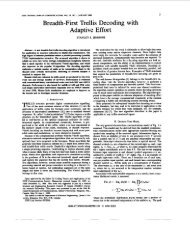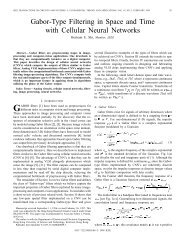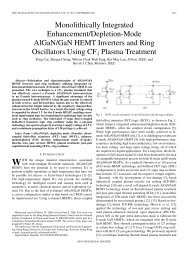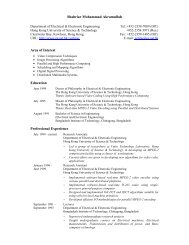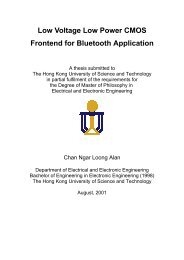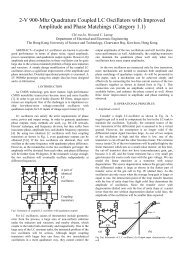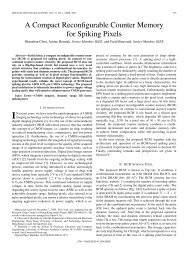Thesis - Department of Electronic & Computer Engineering
Thesis - Department of Electronic & Computer Engineering
Thesis - Department of Electronic & Computer Engineering
You also want an ePaper? Increase the reach of your titles
YUMPU automatically turns print PDFs into web optimized ePapers that Google loves.
Pro<strong>of</strong>: From Lemma 2 and Lemma 3, ∃T< ∞ , such that for t > T,v π1() t > v πi() tfor all i ≠ 1 . From Lemma 4, we have ∃T i< ∞,∀t > T i, v i() t < 0 for i ≠ π 1 , whichimplies that π1neuron is the only active neuron in the network. It can be easily shownthat no matter what the initial conditions are, in steady states, the state potentials areordered in the same order as the external input strengths.Based on the above analysis, if δ 1> δ , then there exists T i< ∞ such that ∀t > T i,v i() t < 0 for all i ≠ π 1. So f i() t = 0 for all i ≠ π 1. Consequently, except the winnerneuron, the activities <strong>of</strong> all the other neurons are completely suppressed to zero.π 1I π1 I π2 … I πNTheorem 3: If > > > , then there exists T i < ∞ , such that ∀t > T i ,f i() t = 0 for all i ≠ π 1 .Pro<strong>of</strong>: The pro<strong>of</strong> is directly implied from Lemma 3 and Lemma 4.Theorem 4: If I π1> I π2> … > I πN, and v π1( 0) = v π2( 0) = … = v πN( 0), thenthere exists∞ > T π2> T π3> … > T πN> 0 , such thatf πi() t = 0 , ∀t > T πiPro<strong>of</strong>:According to Theorem 1, we obtain thatv π1 () t > v π2 () t > … > v πN () t , for allt > 0. From Theorem 3, we know that all the losers will decrease to zero in the end.Obviously, it is not possible for a neuron with larger input to settle down faster than aneuron with smaller input. Thus all the losers settle in the reverse order <strong>of</strong> the externalinputs.12



